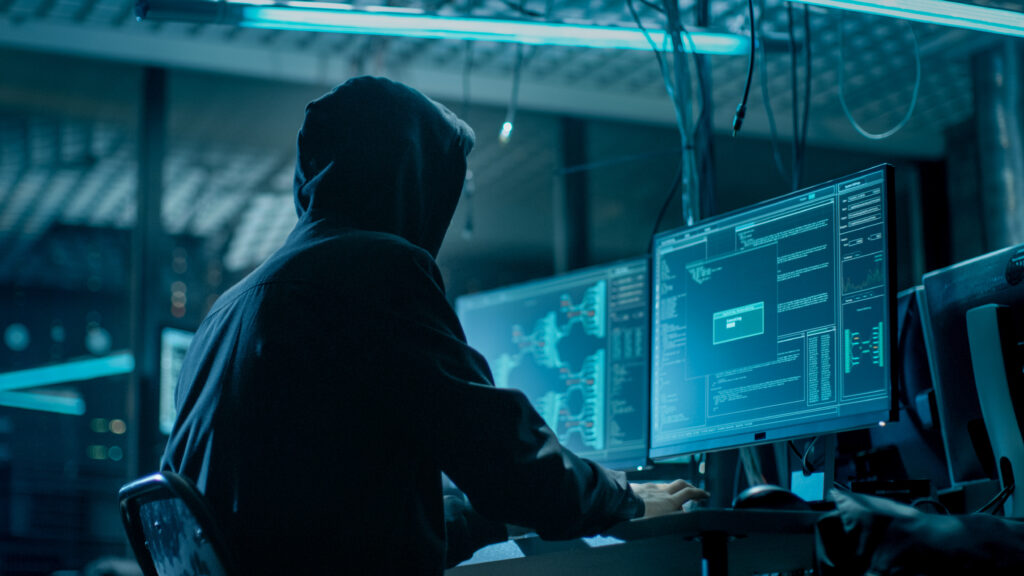The top five unrealistic movie hacks you’ve all seen…
At some point in your life, you will almost certainly have seen a movie hack or a representation of what computer hacking looks like.
Movies, TV shows, and even video games have featured all kinds of different scenes and sequences to visually highlight the threat of an ongoing hack.
Whilst some of these scenes may have some true-to-life inspiration, a lot of the time these movie hacks are a long way from reality.
Here are some of our Top 5 hacking scenes from the media, and what they would actually look like in real life.
-
“I’m in”
Although movie versions of hacks would have you think otherwise, hacking is usually a much longer, drawn-out process than you’d expect.
The common trope in movie hacks of a techie sat at their desk in front of 10 monitors, hammering away on their keyboard, and breaking past several levels of government security in 5 seconds just doesn’t happen in real life. (If it did, you would need hundreds of computers all trying to break through the firewalls at once!)
Hacking into any system is generally slow-going and doesn’t require much input from the hacker themselves, as their software is usually somewhat automated.
That’s not to say some hackers can’t break through quickly; but a quick hack is usually a sign of poor security, not a good hacker. If all your credentials are the same or something easy like ‘123Password’, it’s not going to take a whizz-kid hacker to break in.
[embedyt] https://www.youtube.com/watch?v=FYTLKcb_Jsw[/embedyt]
-
Progress Bars
There’s no such thing as being ‘70% hacked’ – you’re either hacked or you’re not.
An attacker won’t be sat at their desk waiting for a progress bar to hit 100%, they’ll be running software to break through your firewalls, and then infiltrating areas of your infrastructure quietly.
However, if you are hacked, the hacker may not want or need access to your entire infrastructure. In the case of the infamous 2011 PlayStation Network (PSN) Hack, for example, parent company Sony experienced a huge data breach – but only their PSN member account details database was accessed, rather than the whole company.
[embedyt] https://www.youtube.com/watch?v=K7Hn1rPQouU[/embedyt]
-
Announcement from the Hacker
Much like a burglar, a hacker can collect much more valuable data when they’re undetected, so why would they announce their success to their victim?
If you experience a data breach, don’t expect a cackling 8-bit skull and crossbones to flash up on your device to let you know. To detect any viruses, data breaches, or ransomware installed by a hacker, you need functional firewalls and anti-virus software.
Not only will these detect problems, but they’ll also give you the best defence when it comes to preventing them in the first place.
The only time a hacker would announce their work is once it is complete – either by sharing the data they have recovered or informing you of a ransom request.

-
Battle of Skill
As good as your IT department may be, we doubt anyone has ever sat and battled with a would-be hacker to stop an attack. Movies and TV love to promote the stressful battle between the villain and the heroic techie, but in reality there’s no back and forth to ‘stop’ a hack.
Likewise, putting more bodies on the front line doesn’t ‘stop’ a data breach any quicker. Like we mentioned earlier, there’s no progress bar to a hack – you can’t jump in at 50% and battle it back down to 0%. Even two people per keyboard won’t help your efforts, no matter what NCIS would have you believe.
Hacking is actually much more like a game of hide-and-seek, with the attacker masking and hiding their efforts, and your IT provider’s software doing its best to detect and flush them out as soon as possible.
[embedyt] https://www.youtube.com/watch?v=u8qgehH3kEQ[/embedyt]
-
Cool, fast-paced visuals
It goes without saying that a movie, TV show or video game’s main purpose is entertainment – and specifically in this case, to make things look visually exciting.
When it comes to movie hacks, this is usually done with tons of monitors, rapidly opening, and closing windows and tabs, colourful pop-ups and non-stop action.
In actual fact, hacking is much less visually appealing. The majority of it will be done in a single window – in a program known as a ‘console’ or ‘terminal’ – with lines and lines of code to try and break through a system’s defences.
[embedyt] https://www.youtube.com/watch?v=u1Ds9CeG-VY[/embedyt]
BONUS: Quirky IT Nerds
As an added bonus entry, you have the quirky IT character. NCIS, Criminal Minds and a range of other TV and movies are all guilty of this. But often, reality is a lot more mainstream.
At Xiria, our resident tech experts James, Aaron, Angad and Titas are always on hand to help out with any IT problems you may have. They’re not quite the goth-chic of Abby Sciuto, or the one-man-encyclopaedia of Spencer Reid, but they do know their way around cyber security!
And over here at Xiria, we take your cyber security seriously. Our top tips for keeping yourself secure revolve around having multiple layers of defence: good firewalls, employee education, constant device monitoring, and multi-factor authentication.

